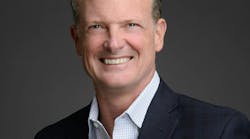Aug. 14--The world's largest aircraft ever mass-produced, a Russian-made Antonov, has been known to fly specialty cargo in to Victorville's Southern California Logistics Airport -- things like a 115-foot propeller blade destined for a wind turbine destined in the Tehachapi Mountains.
"It could have flown into LAX, but now you've got to maneuver these very long propeller blades around downtown L.A.," said Peter Soderquist, the airport's director.
SCLA, formerly known as George Air Force Base, is a port of entry into the United States, one of 20 airports in California to hold that distinction, and while the cargo flow is minuscule compared to what it could be in the future, security is a concern.
All cargo or planes flown into the airport are monitored and anyone who wants to enter the airport is also screened.
"Anybody that comes on that airport to work has to be identified and has to have a badge, with a thorough criminal background check and a five-year verified employment history," said Chuck Wheeler, director of operations for Bower Security -- the private firm that monitors the airport 24 hours a day.
As a port of entry, SCLA must follow strict Transportation Security Administration rules requiring anyone who enters the base to be escorted on the airport at all times.
"My guys are driving around on patrol out there, and if they spot somebody without a badge, obviously they will escort someone off the pro perty, " he said, adding that identification badges expire every six months, when the criminal background check must be renewed.
While the airport has not begun accepting cargo freight on a routine basis, it does receive planes from all over the world that come for a bath, a tune-up and a paint job before being shipped off again. And then there's the specialty cargo -- commercial and military.
About 5 million pounds of commercial and military cargo flew through SCLA in 2003, though the number has gone down somewhat in the last few years, said Soderquist.
Specialty items, like 32 Indy racecars flown in on three 747 widebodies, are the bread and butter of the airport presently.
Ron Stotz, president of Victorville Aerospace, oversees his company's performance of full-service maintenance "Cchecks" on widebody jets from all over the world.
Although some of the planes have already been cleared through San Francisco or Seattle, he said, about 10 percent come directly from Asia, Latin America and Europe.
Before Stotz even gets ahold of the plane, a U.S. Customs officer based in Victorville goes over it and checks in the crew, he said.
"It's done out on the ramp," he said.
In addition, cargo that comes in to the Victorville port of entry is monitored by U.S. Customs and Border Protection one way or another, said spokesman Mike Fleming.
The city of Victorville's vision for the airport has not yet become a reality, but many believe the airport will be pivotal in the expansion of warehouse and distribution space to meet increased demand for traded goods. With land in Ontario becoming more expensive, Victorville holds the promise of becoming the next big distribution hub -- and it's planning to build a rail spur that will make the facility fully intermodal.
The airport, a 1,954-acre master planned foreign trade zone, is a key part of Victorville's vision to become a logistics powerhouse. The idea is that international companies can export parts and assemble them in Victorville, with lower costs for paying a duty on the finished product.
When that day comes, U.S. customs officials will be ready and waiting.
Copyright (c) 2006, Daily Press, Victorville, Calif. Distributed by McClatchy-Tribune Business News.


